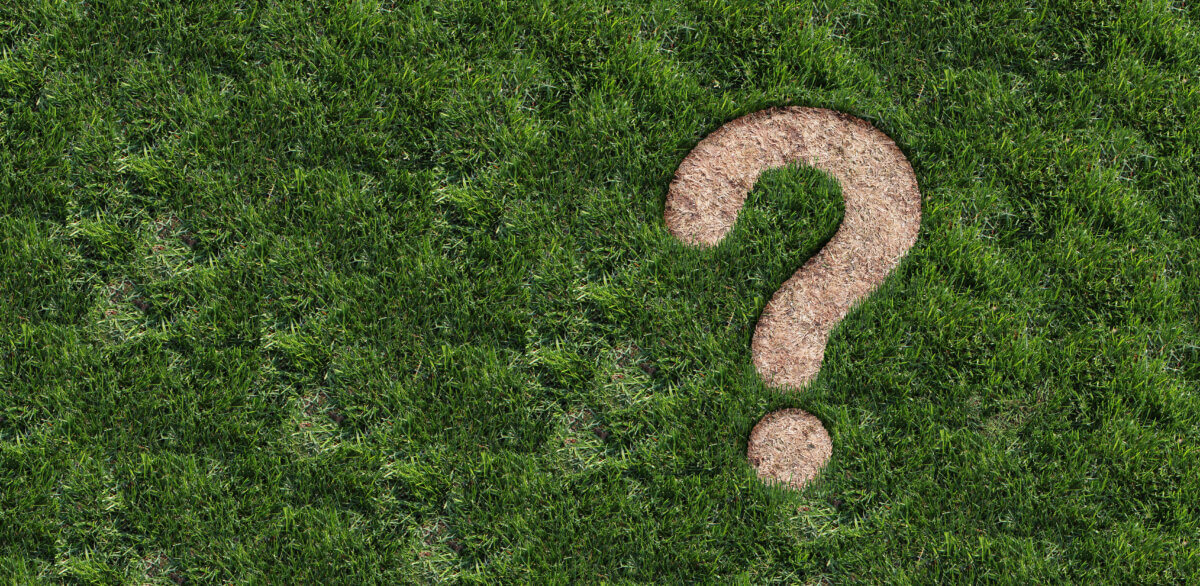
Lawn Troubles: Identifying and Managing Common Turfgrass Diseases
Destruction and turfgrass diseases can kill part or all of a lawn. In most cases, a disease is caused by fungi. While most diseases are only active for a few months out of the year, you could have more than one. Disease infestations depend on the stress the turfgrass sees and its environment.
Duda Sod provides several types of Florida-grown sod, including several drought-tolerant varieties. Some of our sod varieties include St. Augustine sod, Zoysia sod, Bahia sod, and Floratam sod.
The Disease Process
If you’ve ruled out physical destruction, you may have a disease infestation. If the environmental conditions are not correct or you do not adequately maintain the lawn, the weakened turfgrass could cause disease. A disease can start ruining your lawn long before you see it, as the disease process has several steps.
- Inoculation: This is the first step. The pathogen comes into contact with the turfgrass.
- Infection: For the pathogen to infect the turfgrass, it must enter the plant, whether through a wound, such as a cut leaf blade, stomates, or direct penetration.
- Establishment: Just because fungi infect a plant doesn’t necessarily mean the turfgrass is diseased. The pathogens must establish themselves. Once that happens, you can start seeing signs of growth disruption.
- Disruption: You will notice disruption as the average growth of the turfgrass becomes abnormal. It can also affect the plant’s appearance.
- Reproduction: Not all pathogens produce spores. However, those that do spread their spores into the healthy grass. Pathogens can also infect nearby turfgrass without producing spores.
Symptoms of Turfgrass Disease
Instead of monitoring pathogens in turfgrass, there are too many, so you watch for and document disease symptoms. You should also document sites to see if the pathogen returns to the same place the following year.
A disease could be associated with the type of fertilizer you use, excessive shade or irrigation, drought, fertilizer timing, or soil type. Keeping track of the reasons for and the location of the disease can help you manage pathogens that attack your turfgrass.
Spot Signs and Symptoms include:
- A circular patch that is no longer the same green throughout.
- Turf with spots on the blades.
If you see signs of disease, check the blades and the roots for signs of disease. A common disease, mycelia, looks like white cotton candy on dew-covered grass.
Look for crown and root diseases in the early afternoon. They often show up as patches of drought or wilt symptoms. Spots on the blades can also be signs of disease, though factors other than disease can cause spots.
Controlling Turfgrass Diseases in Sod, Orlando
Your actions for controlling turfgrass diseases will depend on the type of disease you find. You can change the environment to get rid of certain diseases and minimize the risk of disease setting in. You can also suppress the growth of the pathogen. Finally, decrease any stress on turfgrass.
To manage affected disease:
- Correctly identify the disease.
- Determine the conditions that caused the disease.
- Remove the conditions that caused the disease, e.g., overwatering, drought, too much shade.
- Outline management techniques to eliminate the disease.
You can send disease samples to the UF/IFAS Extension Plant Diagnostic Center.
Control Practices
You can minimize the risk of disease by being proactive once Duda Sod installs your sod.
- Select the correct turfgrass for your area.
- Keep mower blades sharp so they don’t tear grass blades.
- Remove no more than one-third of the blades at one time. This may require more frequent mowing.
- Mow diseased areas last to minimize disease spread.
- Make sure you rinse correctly – not too much or too little.
- Daily irrigation often encourages pathogens.
- Make sure you use a fertilizer compatible with your turfgrass type. Too much or too little, especially nitrogen, can contribute to disease.
- Remove thatch when necessary.
- Test the soil pH.
- Make sure the soil isn’t too compacted or that nothing is buried in the area where the diseased turfgrass is.
You can control diseases by several methods, including fungicides and ensuring the biologics of the soil are healthy.
Contact Duda Sod
Contact Duda Sod for sod delivery, Orlando. We have several types of sod for the various conditions found in middle Florida.